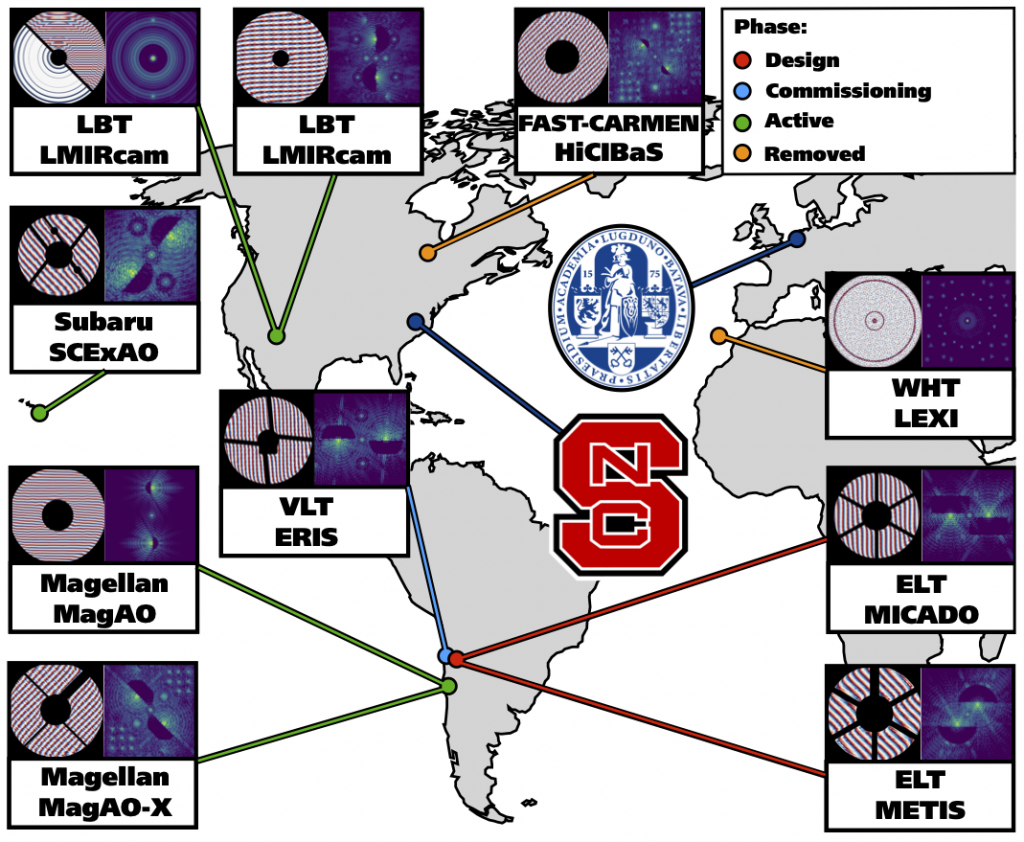Apodizing phase plate coronagraphs consist of a single phase-only pupil-plane apodizer that modifies the PSF in such a way as to suppress the starlight in a certain region of interest in the focal plane. As off-axis light, such as the light from an exoplanet, is apodized by the phase plate as well, we need to maximize the intensity at the center of the PSF (ie. the strehl ratio of the phase plate), while simultaneously constraining the intensity in the dark zone. The corresponding mathematical optimization problem is however non-linear and non-convex, which makes it extremely hard to solve in general. However, its generalization to the case of a complex-amplitude apodizer turns out to be linear and convex. Interestingly, solutions to this generalized optimization problem turn out to be phase-only, proving that the APP is the most optimal pupil-plane-only coronagraph.
In this way we can find the best phase-plate design for any telescope aperture shape and any dark zone geometry and contrast. We routinely add holographic copies integrated into the same phase pattern, that can perform focal-plane wavefront sensing and provide photometric and astrometric references.
Liquid-crystal technology has been applied for the vector-Apodizing Phase Plate (vAPP) coronagraph, currently installed on many 8m-class telescopes around the world. The first vAPP that was tested on-sky is in MagAO at the Magellan Clay telescope. Later, a vAPP was installed at SCExAO at the Subaru telescope and this is the first vAPP with focal-plane wavefront sensing capabilities and the first one that can be used with an integral field spectrograph (CHARIS). During this time, two vAPPs have been commissioned for LMIRCAM at the LBT. These vAPPs are a regular grating vAPP and a double-grating vAPP, with a annular dark zone and where a polarization leakage that is suppressed by at least three orders of magnitude over the full wavelength range. Other vAPPs have been installed on HiCIBaS, a balloon borne telescope and at LEXI at the William Herschel telescope. Future instruments where a vAPP is baselined are MagAO-X@Magellan, ERIS@VLT, MICADO@ELT and METIS@ELT.



